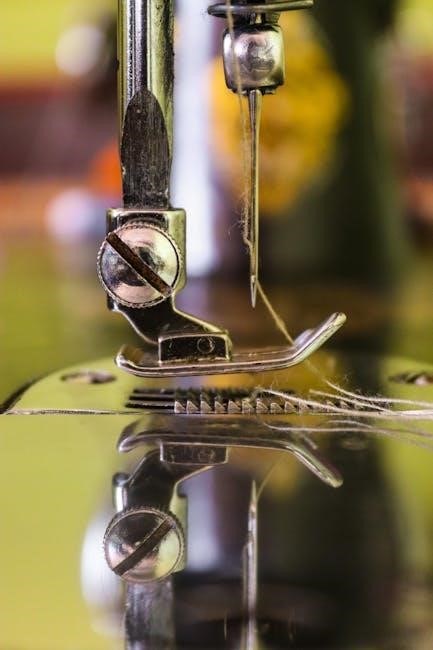
Vintage sewing machine manuals are treasured resources for enthusiasts‚ offering a gateway to the past while providing practical guidance for modern use. These manuals‚ often sought after by collectors and sewers alike‚ detail the operation‚ maintenance‚ and repair of classic machines. They serve as historical documents‚ revealing the evolution of sewing technology and design. Many vintage manuals are now digitized‚ making them accessible to a wider audience. Whether you’re restoring a Singer Featherweight or mastering a treadle machine‚ these manuals are indispensable‚ ensuring the longevity of vintage sewing machines for future generations to enjoy.
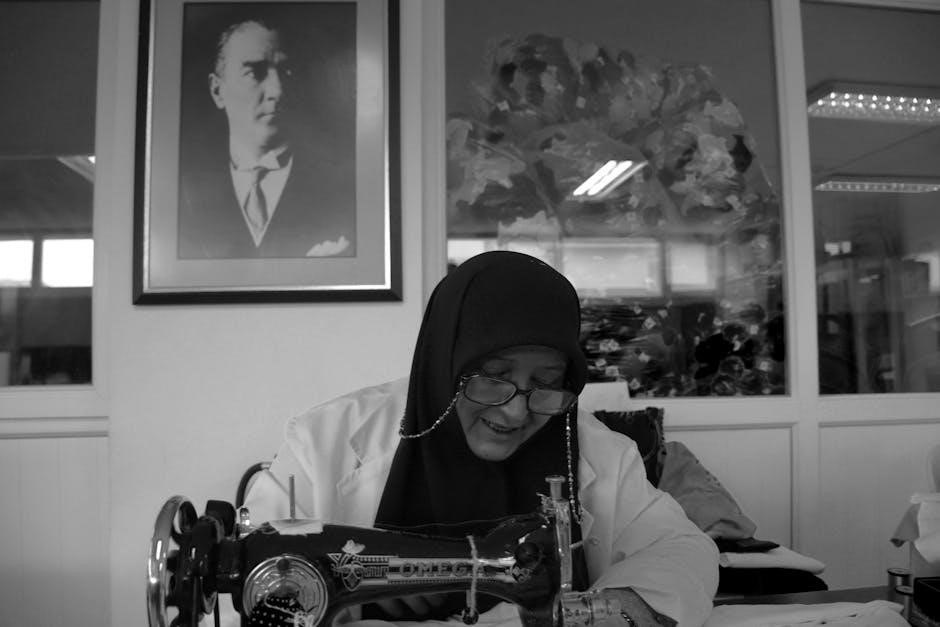
1.1 The Importance of Manuals for Vintage Sewing Machines
Vintage sewing machine manuals are indispensable for anyone looking to understand‚ maintain‚ or restore classic sewing machines. These manuals provide detailed instructions on how to operate‚ troubleshoot‚ and repair vintage models‚ making them a vital resource for both novice and experienced sewers. For instance‚ manuals for Singer Featherweight models like the 221‚ 301‚ and 401 offer step-by-step guides on threading‚ tension adjustment‚ and stitch selection‚ ensuring optimal performance. Similarly‚ manuals for vintage treadle sewing machines‚ such as the Singer Red Eye or Wheeler and Wilson models‚ include diagrams and instructions for oiling‚ cleaning‚ and maintaining the intricate mechanical components.
One of the key reasons manuals are so important is that vintage sewing machines often lack modern automation. Without a manual‚ understanding how to thread the machine‚ set the needle‚ or manage bobbin tension can be challenging. For example‚ Singer 31-15 and Genie models require specific techniques for threading and stitch alignment‚ which are clearly outlined in their respective manuals. Additionally‚ troubleshooting common issues like thread breakage or jamming is much easier with a manual‚ as it provides clear‚ model-specific solutions.
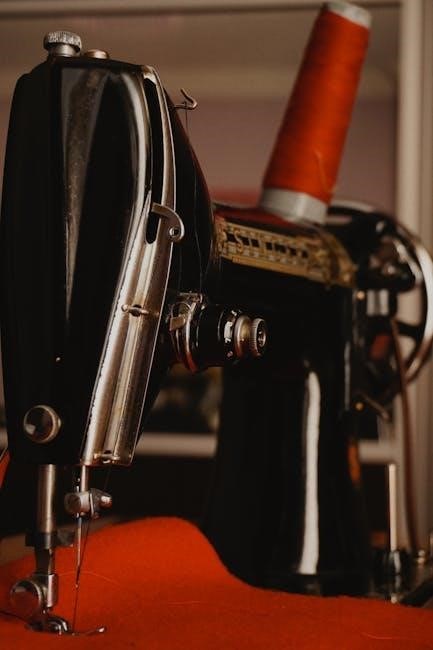
Beyond practical use‚ vintage sewing machine manuals also hold historical and educational value. They often include insights into the craftsmanship and engineering of the time‚ offering a glimpse into the evolution of sewing technology. Manuals from the 1930s and 1940s‚ such as Singer’s “Students Manual of Machine Sewing‚” not only teach sewing techniques but also reflect the cultural context of their era. These documents serve as a bridge between past and present‚ allowing modern users to appreciate the ingenuity of earlier designs while still benefiting from their functionality.
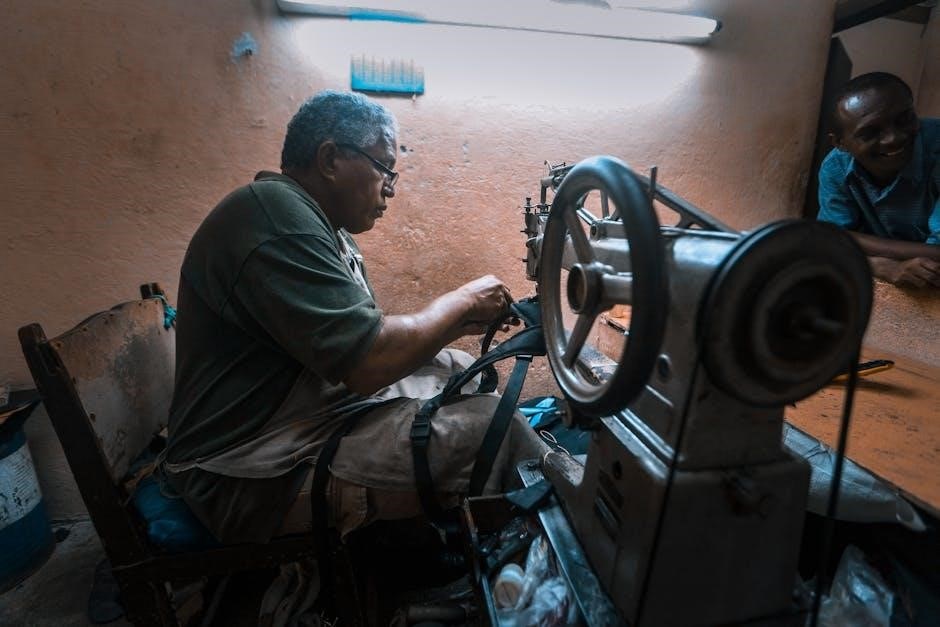
Moreover‚ manuals have become highly sought after by collectors and enthusiasts. Many vintage sewing machine manuals are now rare or out of print‚ making them valuable additions to collections. Some enthusiasts even create digital archives of these manuals‚ ensuring their preservation for future generations. Whether you’re restoring a vintage machine to its former glory or simply looking to learn traditional sewing methods‚ these manuals are an irreplaceable resource.
1.2 Brief History of Sewing Machine Manuals
The history of sewing machine manuals is intricately tied to the evolution of sewing machines themselves. The first practical sewing machine‚ invented by Elias Howe in the 1840s‚ marked the beginning of a new era in textiles and manufacturing. As sewing machines became more prevalent in the late 19th century‚ the need for instructional guides grew‚ leading to the creation of the first sewing machine manuals.
Early manuals were straightforward‚ focusing on the mechanical aspects of the machine. They provided basic instructions for threading‚ operating‚ and performing simple repairs. These manuals were essential for users who were transitioning from hand-sewing to machine-sewing. Over time‚ as sewing machines became more sophisticated‚ so did the manuals. By the early 20th century‚ companies like Singer began producing detailed manuals that included diagrams and step-by-step instructions for various stitches and techniques.
The mid-20th century saw a surge in the mass production of sewing machines‚ with companies like Singer leading the way. Their manuals reflected this shift‚ offering comprehensive guides that catered to both home users and professionals; These manuals often included tips for maintaining the machine‚ troubleshooting common issues‚ and even embroidery patterns. The post-war era‚ in particular‚ saw a rise in home sewing‚ and manuals became indispensable for users looking to create and repair clothing and textiles.
As the decades progressed‚ sewing machine manuals evolved to keep pace with technological advancements. The introduction of electric sewing machines in the mid-20th century led to manuals that included instructions for managing power settings and troubleshooting electrical components. Despite these advancements‚ many vintage sewing machine enthusiasts still cherish the simplicity and durability of early models‚ often seeking out original manuals to restore and operate their machines effectively.
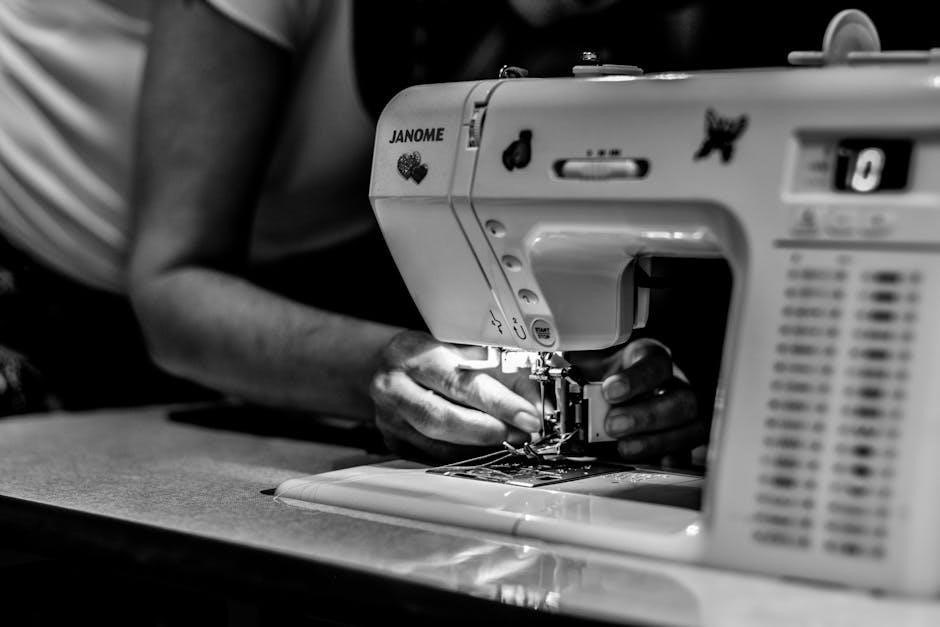
In recent years‚ the rise of the internet has transformed how vintage sewing machine manuals are accessed and shared. Many enthusiasts and collectors have digitized these manuals‚ making them available online for free or for purchase; This preservation effort has ensured that the knowledge contained within these manuals is not lost‚ allowing future generations to continue using and appreciating vintage sewing machines.
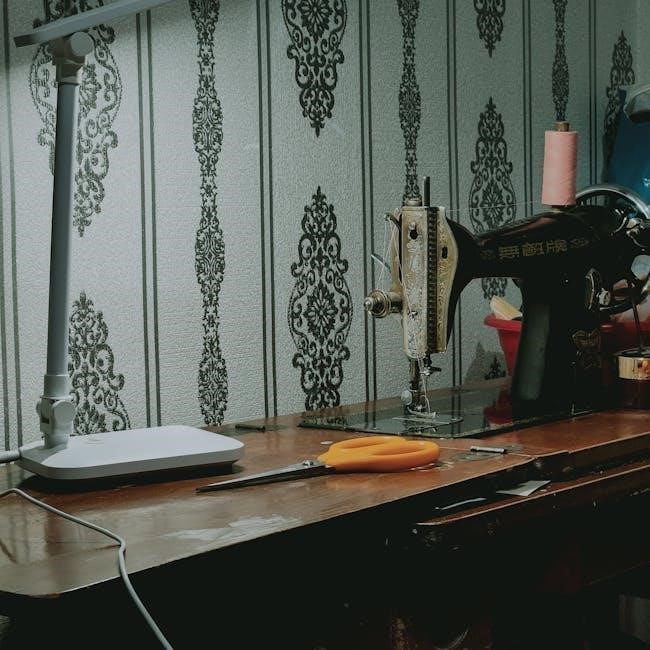
Popular Vintage Sewing Machine Models and Their Manuals

Among the most sought-after vintage sewing machines are the Singer Featherweight models‚ such as the 221‚ 301‚ and 401‚ known for their portability and durability. Their manuals are highly prized by collectors and sewers‚ offering detailed guidance on operation and maintenance. Vintage treadle sewing machines‚ like the Singer Red Eye and Wheeler and Wilson models‚ also remain popular for their nostalgic charm and reliability. Manuals for these machines are often digitized and shared online‚ ensuring their accessibility to modern enthusiasts. These models and their manuals are treasured for their historical significance and practical value in preserving traditional sewing techniques.

2.1 Singer Featherweight Models (221‚ 301‚ 401)
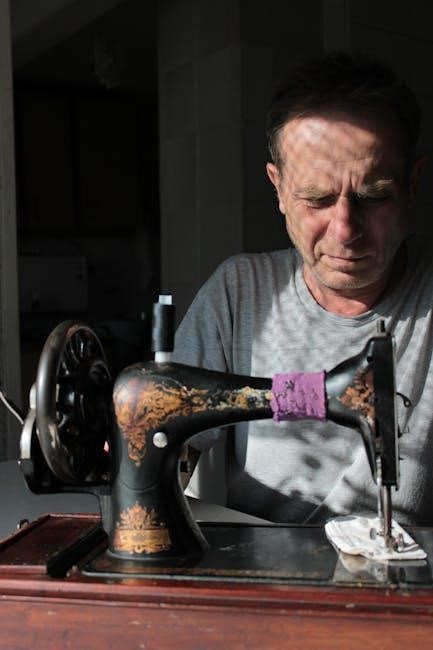
The Singer Featherweight models‚ including the 221‚ 301‚ and 401‚ are among the most iconic and beloved vintage sewing machines. Renowned for their portability‚ durability‚ and versatility‚ these machines have become favorites among collectors and sewists alike. The Singer 221‚ introduced in the 1930s‚ is particularly celebrated for its lightweight aluminum body and sleek design‚ making it easy to transport and store. Its manual is highly sought after‚ as it provides detailed instructions for threading‚ tension adjustment‚ and troubleshooting.
The Singer 301 and 401 models‚ produced in the mid-20th century‚ built on the success of the 221. These machines featured advancements such as automatic stitch length adjustment and a free-arm option‚ enhancing their utility for both home sewers and professional tailors. Their manuals are equally valuable‚ offering step-by-step guides for maintaining and repairing the machines. Enthusiasts often scour vintage shops and online marketplaces for original manuals‚ which are now frequently digitized and shared among sewing communities.
One of the key reasons these Singer Featherweight models remain popular is their ease of use. The manuals emphasize simplicity‚ with clear diagrams and instructions that cater to both beginners and experienced sewers. For instance‚ the 221 manual includes a section on basic maintenance‚ such as oiling the machine and cleaning the bobbin area‚ ensuring it runs smoothly for decades. Similarly‚ the 301 and 401 manuals highlight their ability to handle various fabrics‚ from delicate silk to heavy denim‚ making them versatile tools for any sewing project.
The availability of these manuals has also contributed to the enduring popularity of the Singer Featherweight models. Many sewing machine enthusiasts and collectors have digitized and shared these manuals online‚ making them accessible to a global audience; This has not only preserved the heritage of these machines but also allowed a new generation of sewers to appreciate their craftsmanship and functionality. Whether you’re restoring a vintage Singer Featherweight or simply looking to understand its mechanics‚ the manuals serve as an invaluable resource.
2.2 Vintage Treadle Sewing Machines (e.g.‚ Singer Red Eye‚ Wheeler and Wilson)
Vintage treadle sewing machines‚ such as the Singer Red Eye and Wheeler and Wilson models‚ represent a significant chapter in the evolution of sewing technology. These machines‚ often powered by foot pedals‚ were staples in households and workshops during the 19th and early 20th centuries. Their durability and mechanical simplicity have made them enduring favorites among collectors and enthusiasts of antique sewing machines. The manuals for these models are highly sought after‚ as they provide essential guidance for operation‚ maintenance‚ and repair.
The Singer Red Eye‚ named for its distinctive red eye decal‚ is one of the most recognizable treadle machines. Produced in the late 19th and early 20th centuries‚ it is celebrated for its robust construction and reliability. The manual for the Singer Red Eye is particularly valuable‚ as it includes detailed instructions for threading‚ tension adjustment‚ and troubleshooting common issues. These instructions are often accompanied by clear diagrams‚ making the manual accessible even to those unfamiliar with mechanical systems.
Similarly‚ the Wheeler and Wilson treadle machines are prized for their innovative design and precision engineering. Wheeler and Wilson was one of the earliest sewing machine manufacturers‚ and their treadle models reflect a commitment to quality and craftsmanship. The manuals for these machines are filled with practical advice‚ from oiling the gears to maintaining the balance wheel. They also highlight the versatility of the machines‚ which were capable of handling a wide range of fabrics and stitches.

One of the key reasons vintage treadle sewing machines remain popular is their reliance on mechanical power rather than electricity. This makes them appealing to those who appreciate traditional craftsmanship and the tactile experience of sewing. The manuals for these machines often emphasize the importance of regular maintenance to ensure optimal performance. For example‚ they may include instructions for cleaning the shuttle race‚ adjusting the take-up lever‚ and ensuring proper alignment of the needle and bobbin.
In addition to their practical value‚ the manuals for vintage treadle machines offer a glimpse into the history of sewing and textiles. They often include tips for optimizing fabric usage‚ selecting the right needles‚ and achieving professional-grade results. These insights are particularly valuable for modern sewers who are interested in preserving traditional techniques while incorporating them into contemporary projects.
For enthusiasts of vintage treadle sewing machines‚ the manuals are an indispensable resource. They not only provide technical guidance but also serve as a connection to the past‚ allowing users to appreciate the ingenuity and craftsmanship that went into creating these machines. Whether you’re restoring a Singer Red Eye‚ a Wheeler and Wilson‚ or another vintage treadle model‚ the manual is your key to unlocking its full potential and ensuring it continues to function beautifully for years to come.
Leave a Reply
You must be logged in to post a comment.